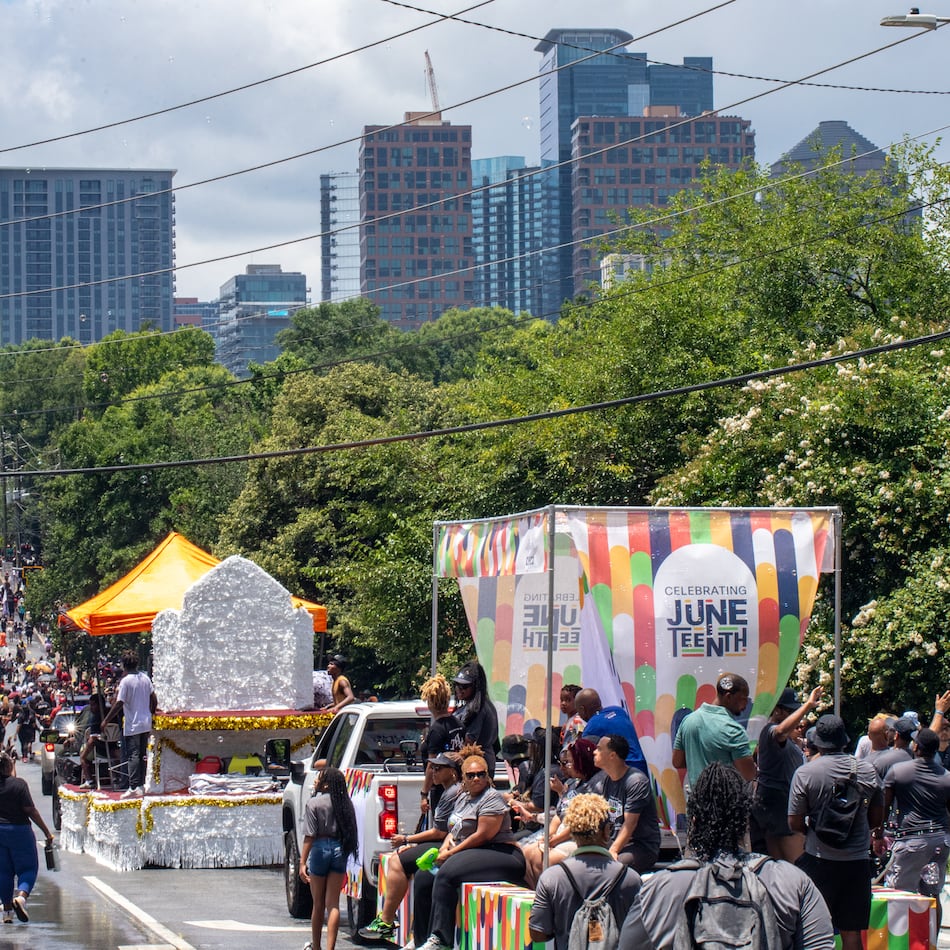You might not guess from the aluminum ladders suspended over the swimming pool in his Dunwoody backyard, but Wendy’s/Arby’s Group president and CEO Roland Smith lives with a passion for the outdoors.
He grew up fishing and camping in Alaska. He became a West Point cadet who traversed glaciers, a pilot in the U.S. Army and morphed into a motorcycling executive who still tries to target one major expedition each year. Last June, Smith and his two sons, Knolan and Justin, rode 3,800 miles through Canada, Yukon and Alaska — camping along the way.
In 2008, Smith climbed most of Mount Everest with his youngest son, Justin, who will graduate from West Point this May. (He was working on a tight business schedule, so they only had time to ascend to 23,500 feet.)
Here's his story as told to the AJC:
"Ever since college, I’ve looked for ways on a regular basis to challenge my own capabilities, to look fear in the face and take a little bit of a risk. Because only people who are willing to take risks are truly free.
I had three weeks to get to Nepal, climb Everest and return to Atlanta. So, I sat down with my guide and we mapped out how high we could go and get back down in basically 18 days. The consensus was, we could get to advanced base camp, Camp 2, which is in the neighborhood of 21,500 feet.
In the climbing world, you really don’t talk about feet, you talk about meters: Everest is an 8,848-meter peak. Justin and I knew we couldn’t get to 8,000 meters, but we really wanted to break the 7,000-meter mark. Camp 2 is at 6,600 meters. Climbing without oxygen, we pushed ourselves and eventually made it all the way to Camp 3 at 7,200 meters.
Going through the Khumbu Icefall [at approximately 18,500 feet], there are more than 40 large crevasses that we crossed on aluminum ladders — sometimes with four or five ladders lashed together. A group of sherpas are paid to keep this route open, because the ice moves and they have to readjust these ladders on a regular basis. You actually pay a toll. I think it’s about $1,200 a person to use their ladders, which is worth every penny.
Going through the Khumbu was seven of the longest hours I can remember. It’s long and it’s arduous and you’re totally focused because you’re balancing on these ladders.
It’s very dangerous. I was worried about me, but I was much more worried about Justin. My wife, Lynne, doesn’t go on these adventures with us. But, she understands me. She knows this is something I need to do. However, she has this one rule, and that is, “Go on your adventures. Have a great time. But, don’t come back without our boys.”
If you look at the elements necessary to achieve any goal, planning and preparation are critical.
We started training seriously about a year and a half before the trip. For the last four months, when our training got very specific, Justin and I both realized that having crampons, climbing boots and a pack while standing on a standard aluminum ladder was not something we had any practice with. And we didn’t want to figure it out for the first time in the Khumbu.
So we went down to Home Depot and bought a bunch of ladders and lashed them together and put them over the pool, because falling off the ladders into the pool wasn’t the worst thing that ever happened — we’d just get wet!
We got on a span of about 12 to 15 feet with our gear and, most important, our climbing boots and crampons. And we learned how to negotiate the rungs, because most of them [in the Khumbu Icefall] are horizontal.
Importantly, I’ve also learned how to apply my climbing preparation and experiences to my professional life. One of the first things I did after coming back from Everest was to address the entire Wendy’s franchisee community at a convention. We had just completed the Wendy’s merger and I wanted to connect with them and explain my plan to revitalize the Wendy’s brand. To do so, I put my plan in terms of mountain climbing.
What are the elements necessary to successfully climb a mountain? You got to have a clear goal, planning and preparation, leadership, teamwork, innovation, execution, perseverance and trust.
I took my adventure on Everest, which most people can understand, because it’s so physically difficult, and I made the analogy that we have our own mountain to climb at Wendy’s. We need the same elements to climb our mountain that I needed to climb Mount Everest.
I think it worked well. Maybe I got a little credibility because they thought, well, he got up Everest and that was challenging, so maybe he can help us accomplish some difficult things. But, whatever the reason, they embraced my plan and we accomplished a lot together at Wendy’s in 2009.
People are always finding reasons why they can’t accomplish things. We talk ourselves out of doing great things: “It’s too hard. I’m too old. I didn’t go to the right school.” There are thousands of excuses.
Climbing reminds me that we’re able to do so much more than we think, if we are willing to take a little bit of a risk, plan for it and then just do it!
Long after you say I’m done and I can’t do any more, you’ve still got plenty more in your tank, which is what you learn on the side of a mountain.”
As told to Tom Sabulis, tsabulis@ajc.com
About the Author
Keep Reading
The Latest
Featured

